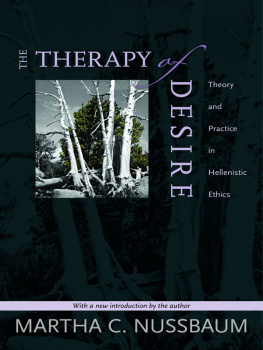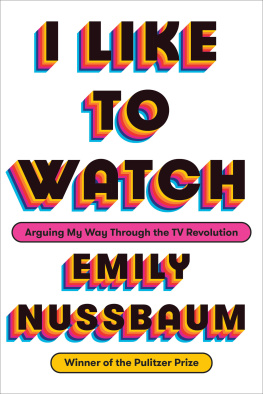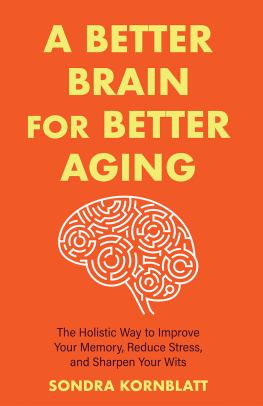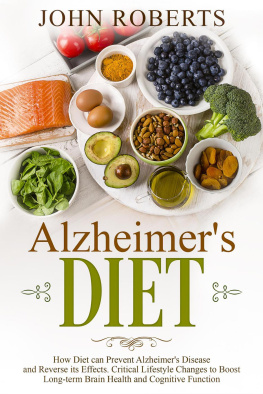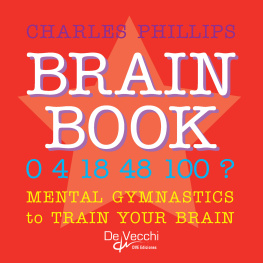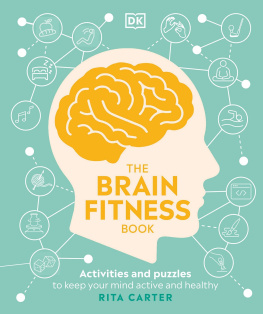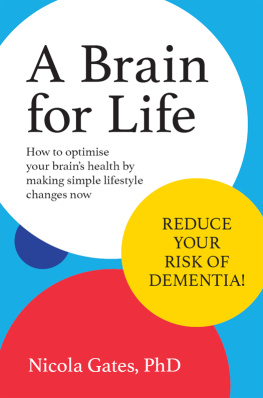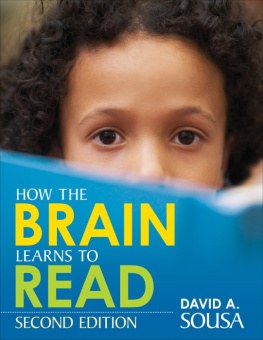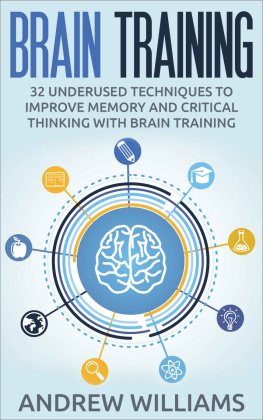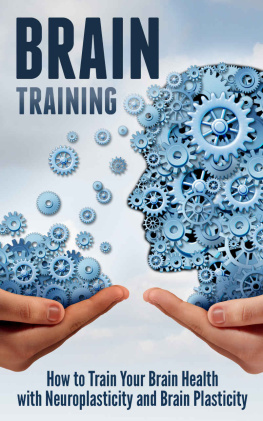Nussbaum - Save Your Brain
Here you can read online Nussbaum - Save Your Brain full text of the book (entire story) in english for free. Download pdf and epub, get meaning, cover and reviews about this ebook. City: New York;USA, year: 2010, publisher: McGraw-Hill Education;McGraw-Hill Professional Publishing, genre: Romance novel. Description of the work, (preface) as well as reviews are available. Best literature library LitArk.com created for fans of good reading and offers a wide selection of genres:
Romance novel
Science fiction
Adventure
Detective
Science
History
Home and family
Prose
Art
Politics
Computer
Non-fiction
Religion
Business
Children
Humor
Choose a favorite category and find really read worthwhile books. Enjoy immersion in the world of imagination, feel the emotions of the characters or learn something new for yourself, make an fascinating discovery.

- Book:Save Your Brain
- Author:
- Publisher:McGraw-Hill Education;McGraw-Hill Professional Publishing
- Genre:
- Year:2010
- City:New York;USA
- Rating:3 / 5
- Favourites:Add to favourites
- Your mark:
- 60
- 1
- 2
- 3
- 4
- 5
Save Your Brain: summary, description and annotation
We offer to read an annotation, description, summary or preface (depends on what the author of the book "Save Your Brain" wrote himself). If you haven't found the necessary information about the book — write in the comments, we will try to find it.
Save Your Brain — read online for free the complete book (whole text) full work
Below is the text of the book, divided by pages. System saving the place of the last page read, allows you to conveniently read the book "Save Your Brain" online for free, without having to search again every time where you left off. Put a bookmark, and you can go to the page where you finished reading at any time.
Font size:
Interval:
Bookmark:
5 Things You
Must Do to Keep
Your Mind Young and Sharp
PAUL DAVID NUSSBAUM, PH.D.


Copyright 2010 by Paul David Nussbaum. All rights reserved. Except as permitted under the United States Copyright Act of 1976, no part of this publication may be reproduced or distributed in any form or by any means, or stored in a database or retrieval system, without the prior written permission of the publisher.
ISBN: 978-0-07-171785-4
MHID: 0-07-171785-4
The material in this eBook also appears in the print version of this title: ISBN: 978-0-07-171376-4, MHID: 0-07-171376-X.
All trademarks are trademarks of their respective owners. Rather than put a trademark symbol after every occurrence of a trademarked name, we use names in an editorial fashion only, and to the benefit of the trademark owner, with no intention of infringement of the trademark. Where such designations appear in this book, they have been printed with initial caps.
McGraw-Hill eBooks are available at special quantity discounts to use as premiums and sales promotions, or for use in corporate training programs. To contact a representative please e-mail us at bulksales@mcgraw-hill.com.
TERMS OF USE
This is a copyrighted work and The McGraw-Hill Companies, Inc. (McGraw-Hill) and its licensors reserve all rights in and to the work. Use of this work is subject to these terms. Except as permitted under the Copyright Act of 1976 and the right to store and retrieve one copy of the work, you may not decompile, disassemble, reverse engineer, reproduce, modify, create derivative works based upon, transmit, distribute, disseminate, sell, publish or sublicense the work or any part of it without McGraw-Hills prior consent. You may use the work for your own noncommercial and personal use; any other use of the work is strictly prohibited. Your right to use the work may be terminated if you fail to comply with these terms.
THE WORK IS PROVIDED AS IS. McGRAW-HILL AND ITS LICENSORS MAKE NO GUARANTEES OR WARRANTIES AS TO THE ACCURACY, ADEQUACY OR COMPLETENESS OF OR RESULTS TO BE OBTAINED FROM USING THE WORK, INCLUDING ANY INFORMATION THAT CAN BE ACCESSED THROUGH THE WORK VIA HYPERLINK OR OTHERWISE, AND EXPRESSLY DISCLAIM ANY WARRANTY, EXPRESS OR IMPLIED, INCLUDING BUT NOT LIMITED TO IMPLIED WARRANTIES OF MERCHANTABILITY OR FITNESS FOR A PARTICULAR PURPOSE. McGraw-Hill and its licensors do not warrant or guarantee that the functions contained in the work will meet your requirements or that its operation will be uninterrupted or error free. Neither McGraw-Hill nor its licensors shall be liable to you or anyone else for any inaccuracy, error or omission, regardless of cause, in the work or for any damages resulting therefrom. McGraw-Hill has no responsibility for the content of any information accessed through the work. Under no circumstances shall McGraw-Hill and/or its licensors be liable for any indirect, incidental, special, punitive, consequential or similar damages that result from the use of or inability to use the work, even if any of them has been advised of the possibility of such damages. This limitation of liability shall apply to any claim or cause whatsoever whether such claim or cause arises in contract, tort or otherwise.
To Kimberly
Every author can only hope that the content of his or her work will generate enough interest to connect with people. I have been fortunate enough to work directly with the public for more than a decade and witness the deep personal connection that brain health can make. My work across the United States has taught me several lessons, including the need to make sure my message is personal and is felt on a personal level by the audience. Second, people are genuinely interested in learning about their brains, and for most, our interaction is an introduction into the miracle of their brain. Third, people are willing to change behavior to promote their health, but that change does not occur unless informed by the why and the how behind the change. Fourth, millions of baby boomers are now caregivers for parents who have dementia, and these caregivers do not want to suffer the same misfortune; they want to preserve access to their life stories. Finally, due to current public interest in health and health care, there is recognition that a proactive lifestyle toward health is important, particularly for the brain. Together, these lessons have motivated me to write this bookto connect more with people about the most personal of all stories, their brain health and the brain health of their loved ones.
As a clinical neuropsychologist, I have cared for hundreds, and probably thousands, of patients who suffer from diseases and conditions of the brain ranging from depression, mania, schizophrenia, and substance abuse to dementia associated with Alzheimers disease, stroke, Parkinsons disease, tumors, epilepsy, and head injury. These and other afflictions of the brain provide a real picture of the significant loss that can occur when the brain is damaged. There is a realization that the brilliance of the brain is, at the same time, fragile. It is from the loss of brain capability that a deeper appreciation of the brilliance and gift that is the brain emerges. It can also be the motivation to learn more about your brain and to begin the lifelong work toward brain health.
I have had the wonderful opportunity to speak to thousands of people from diverse sectors of society all across the United States and beyond about the human brain. My work and my message is to provide information on the basics of the human brain, how the brain operates and can be shaped by environment, and how my brain health lifestyle can be a guide to follow to promote brain health. As you read along, you will find that this book is written in a personal, informative, and fun manner so that everyone can benefit by learning more about their brain health.
From feedback I have received on presentations delivered to small groups in basements of buildings and audiences of more than five thousand people, I have learned that the public is very interested and enthusiastic about brain health. The message has found its way to the United Nations, the National Press Club, major media outlets, newspapers and magazines, the Internet, and new business start-ups and into the hallways of education, health care, corporate America, libraries, health insurance, and retail. Ive spent many hours speaking to reporters and audiences about the miracle of the human brain, and Ive written several books on the topic. A lot of what drives this mission is my firm belief that it is critical to take what we learn in the lab and from research and communicate it and apply it to the general public, which is why I approach brain health from the perspective of lifestyle.
As the brain is the center of our identity, it is easy to understand why people are so interested. Most people enjoy learning about themselves and will work to improve their health if they are told how. This book is a major step toward taking my message of brain health to a larger audience and instilling in them the idea that there is a miracle sitting within our heads that enables our every thought, emotion, and behavior.
We know more now about the human brain than at any other time in our history. We will continue to learn, and we certainly have much to learn. However, it is now abundantly clear that many stimuli in our everyday environment can shape both the structure and function of our brain. We now believe the human brain is directly affected by the types of environments we are exposed to on a daily basis. For some individuals, an enriched environment can literally promote the health of the brain, while others may cope with more traumatic stimuli, such as war. Regardless, it is critical that we all understand that our brains will be shaped by the type of environmental input, or stimuli, that we encounter on a daily basis.
Font size:
Interval:
Bookmark:
Similar books «Save Your Brain»
Look at similar books to Save Your Brain. We have selected literature similar in name and meaning in the hope of providing readers with more options to find new, interesting, not yet read works.
Discussion, reviews of the book Save Your Brain and just readers' own opinions. Leave your comments, write what you think about the work, its meaning or the main characters. Specify what exactly you liked and what you didn't like, and why you think so.

